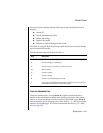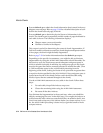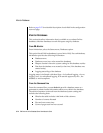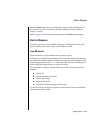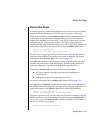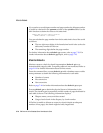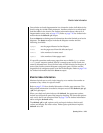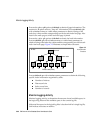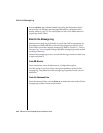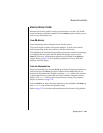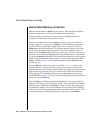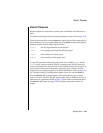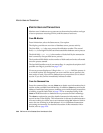
Operating OnLine 3-79
Monitor Index Information
One solution to chunk fragmentation is to cluster the index of all tables in the
chunk using the ALTER TABLE statement. Another solution is to unload and
load the tables in the chunk. (For further information about what to do if
fragmentation exists, refer to page 3-72.) Refer to page 7-43 for further infor-
mation about the tbcheck -pe output.
Execute tbstat -t to obtain general information about the limited set of active
tblspaces. The tbstat -t output includes the tblspace number and the
following four fields:
If a specific operation needs more pages than are available (npages minus
nused), a new extent is needed. If there is enough space in this chunk, the
extent is allocated here. If not, OnLine looks in other chunks for the space. If
none of the chunks contain adequate contiguous space, OnLine uses the
largest block of contiguous space it can find in the dbspace. Refer to page 7-98
for further information about the tbstat -t output.
Monitor Index Information
Monitor the indexes to verify index integrity or to monitor the number or
contents of key values in a specific index.
Refer to page 2-133 for a detailed discussion of index page structure. This
background information is needed to interpret most of the tbcheck -pk, -pl,
-pK, and -pL output.
When you check and print indexes with tbcheck, the uppercase options
include rowid checks as part of the integrity checking. The lowercase options
only verify the B+ tree structure. Refer to page 7-36 for further information
about using the tbcheck utility.
The tbcheck -pK or -pL options verify and repair indexes, check rowid
values, and display the index values. Either option performs an implicit
tbcheck -ci or -cI.
npages
are the pages allocated to the tblspace.
nused
are the pages used from this allocated pool.
nextns
is the number of extents used.
npdata
is the number of data pages used.



